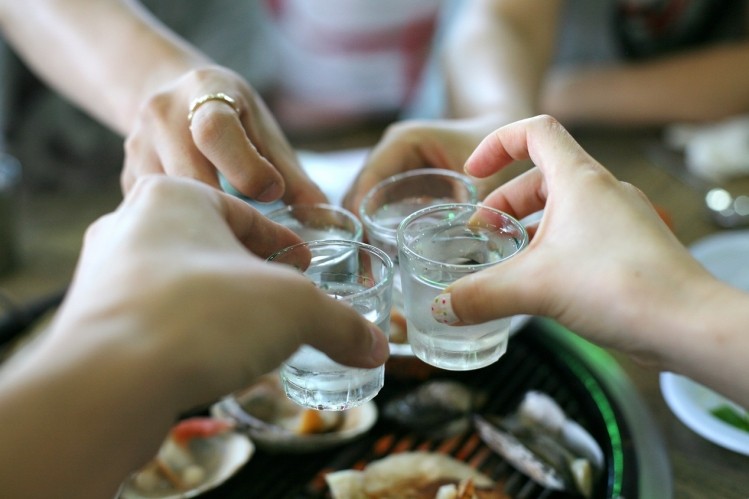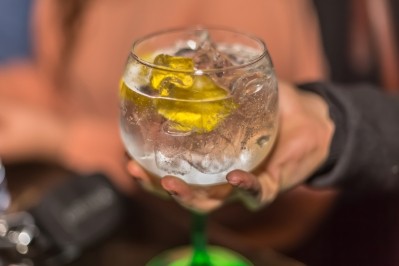Korea readies to ban starlets from alcohol advertising

According to health officials, plans are underway to put a ban on celebrity endorsements in a drinks industry that enjoys next to no advertising regulation, and relies on glamour to sell its beer and soju, the country’s favourite spirit.
This would mean the likes of Irene of the girl group Red Velvet would no longer be seen clutching a bottle of Chamisul soju or singer-actress Suzy Bae shown enjoying a dash of Chumchurum in commercials.
Drinking habits in Korea
The proposed move, being co-ordinated by South Korea’s Ministry of Health and Welfare, is intended to put an end to the fast growth in underage and female drinking that the country has been seeing in recent years, beyond what are already phenomenal rates of liquor consumption.
The last time the idea was proposed, in 2012, lawmakers had considered banning celebrities under the age of 24 from appearing in ads. The legal drinking age in Korea is 19, while stars as young as 21 regularly appear in brands’ advertising.
Now, though, they want to see famous faces completely banished from drinks packaging and removed altogether from accompanying advertising by as early as next year.
Officials have been discussing plans for the ban for the last year in response to an increase in underage drinking that rose from 15% of adolescents in 2016 to 16.9% in 2018, according to government data.
Korea has also seen an increase in the number of women who regularly drink, up from 41.5% in 2007 to 50.5% a decade later. The percentage of male drinkers has remained static over the same period, registering just a 0.5% rise to 74%.
According to a 2014 study by Euromonitor, South Koreans consumed 13.7 shots of liquor a week on average. At the same time, Russians drinkers were on average found to down only 6.3 while Americans had had enough after just 3.3 shots.
How much influence do celebrities have?
The growth in women drinkers has been blamed on their vulnerability to liquor marketing that features stars.
According to one psychiatry professor quoted by the South China Morning Post, the “tremendous increase” in women drinkers is due to a corresponding rise in female singers appearing in alcohol advertising.
And according to Korea Times, the ministry also does not want young consumers to drink because of a perceived "cool" factor linked to a product’s endorsement by famous names.
"Popular celebrities such as actors or singers wield great influence over children and teenagers, so putting their photos on alcohol bottles and cans should be avoided," lawmaker Nam In-soon, who recommended the ban.
The ministry’s mental health policy director Hong Jeong-ik has since said the government intends to follow through with Nam’s recommendations
Alcohol marketing will certainly be less glamorous and fleshy in Korea if this proposed ban is passed, especially if it comes soon after the first new year in many that is not marked by skimpy calendars featuring half-naked women.
Hite-Jinro, the world’s biggest maker of soju, has for years adorned eateries and bars across the country with calendars containing nearly nude models in racy poses and distributed the calendars to consumers throughout January. Instead, the pin-ups will be replaced by images of barbecued pork belly and other meat dishes.
Another maker of alcoholic beverages, Oriental Brewing, has also this year ended its practice of releasing “sporty” calendars featuring Korean models in miniskirts and short shorts for its OB beer brand. The firm’s 2019 calendars show landscapes and scenery instead.
While Hite-Jinro has attributed its decision to discontinue making the calendars to the “current social atmosphere”, Korean media cited “feminist trends” as the main reason for both companies’ termination of their practice.
Showbiz earnings take hit
Considered an extremely conservative and homosocial society, many restaurants and bars that are family-friendly during the daytime transform in the evenings when they fill up with office crowds, many of whom are enjoying mandatory afterwork tipples.
Women, who account for a growing proportion of the workforce, are expected to leave their male colleagues after a while to go home and look after their children or families. The men usually stay on, surrounded by a crowd of brand images that many women consider objectifying.
As male drinkers bemoan the prospect of less eye candy and women consider life without their pop heroines on their bottles and posters, the starlets themselves could be destined to lose out on a whole chunk of income.
Alcohol endorsements can provide the top celebrities with substantial bump in earnings, with brands known to shell out upwards of 20 billion won (US$16.8m) a year for each one to appear in their advertising campaigns.
Jostling between stars the top of the showbiz firmament for the most lucrative deals is a cutthroat business.
In 2014, K-pop star IU became the face of Chamisul soju at the age of 21, while actress and television presenter Hyori was the face of Lotte Liquor’s Chumchurum. Red Velvet’s Irene replaced IU as Chamisul’s main model last December.
According to research done by the CM Institute in Seoul, the 10 most advertiser-friendly celebrities in Korea can appear in as many as 200 commercials each year, with one study from May 2014 showing more than half of all television commercials carried endorsements from at least one famous face.
Their presence has brought brands far more success than they would have enjoyed without the adoring gaze of K-pop superstars on their posters and labels, experts say, putting it down to a “collectivist mentality” that Koreans share with their Japanese and Chinese neighbours.






